Neil Morrison | February 13, 2024
Neil Morrison recaps the annual MotoGP Official Test at Sepang and the preseason shakedown.
To see more details from each day of testing, click HERE
Racing begins with the Qatar Airways Grand Prix of Qatar at Lusail International Circuit on March 8-10. To view the broadcast times on VideoPass, visit the TV and Live-Stream Racing Listings page on Cycle News.
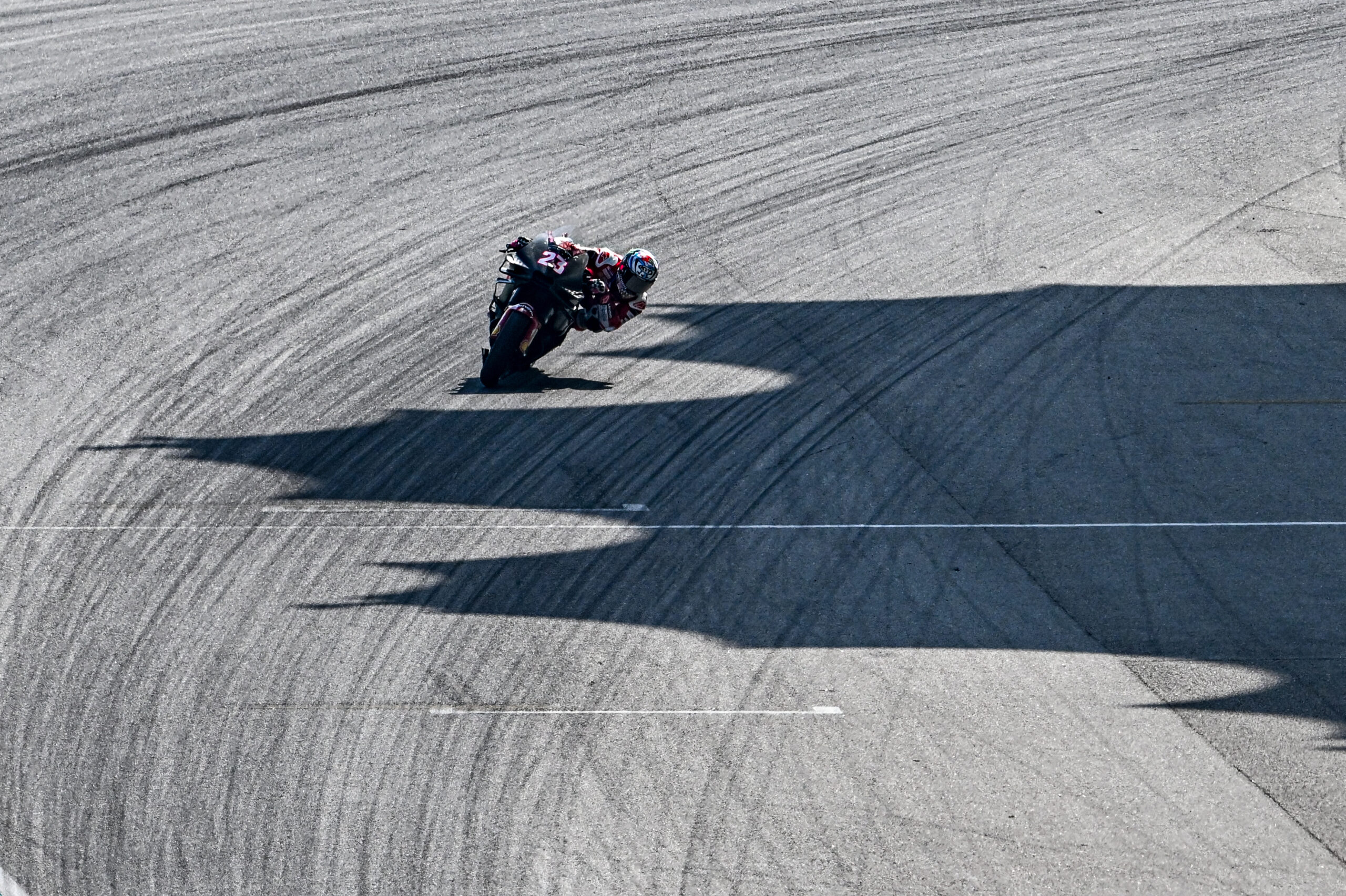
The more things change, the more they stay the same. That much could be said of MotoGP and its five factories as they showcased a winter’s worth of work across six sweaty days of testing—three for the Shakedown, three for the official—at Sepang.
Each factory could leave Malaysia feeling optimistic thanks to an array of ridiculously fast times. But the manufacturer hierarchy established last year, with Ducati clearly leading the way, remains intact for the time being at least.
Parts of the track, which had been resurfaced before last November’s GP, were now fully bedded in. And three days of Shakedown testing meant there was already plenty of grippy Michelin rubber laid down when the test commenced on February 6.
Even still, that didn’t fully explain the barely believable lap times on show come the final day. Revised aerodynamics packages were among the most important items being tested by Ducati, KTM and Aprilia. And in keeping with the past years’ events, times just keep getting faster.
Reigning champion Pecco Bagnaia (Lenovo Ducati) led a quartet of Ducatis who lapped in the 1 minute, 56 seconds—a first for the Sepang International Circuit, while each of the first 10 names on the timesheets were under Bagnaia’s outright circuit record of 1 minute, 57.491 seconds, set last November. On this evidence, MotoGP promises to be faster than ever yet again in 2024.
Here’s a look at the biggest stories from Sepang:
 Defending champ Pecco Bagnaia was flying on the new Ducati GP24. Lap times suggest that 2024 will be the fastest MotoGP season ever. Photos: Gold & Goose
Defending champ Pecco Bagnaia was flying on the new Ducati GP24. Lap times suggest that 2024 will be the fastest MotoGP season ever. Photos: Gold & Goose
Ducati Ominous
General Manager Gigi Dall’Igna had promised an engine with increased horsepower in January. But anyone hoping that could disrupt the equilibrium of the grid’s best bike was left disappointed. The GP24 is punchier out of turns and retains the good handling characteristics of its predecessor. “The braking’s improved a lot,” said Bagnaia. “Last year, I was struggling there. With this bike, it looks more similar to the ’22, which was helping me more in corner entry.”
The second fastest, Jorge Martin (Pramac Ducati), wasn’t initially enamored with a different aero package, while Bagnaia and Enea Bastianini (Lenovo Ducati) were. By the final day, it had won him over. Both he and Bagnaia already appear ready to race, with the world number-one stating he only needs to test a variety of power maps in the upcoming Qatar test.
Surely, a factory that amassed 17 victories from 20, the only way is down. But the reality is Ducati should be even stronger this year, with Marc Marquez (Gresini Ducati) joining their ranks and factory team manager Davide Tardozzi stating Bastianini, who finished third, is showing signs of returning to the rider that lit up the series in 2022. Of those who did a 10-lap Sprint simulation, Aleix Espargaro was the only non-Ducati in the fastest six names. As it was a year ago, the red bikes are ominously fast across the board.
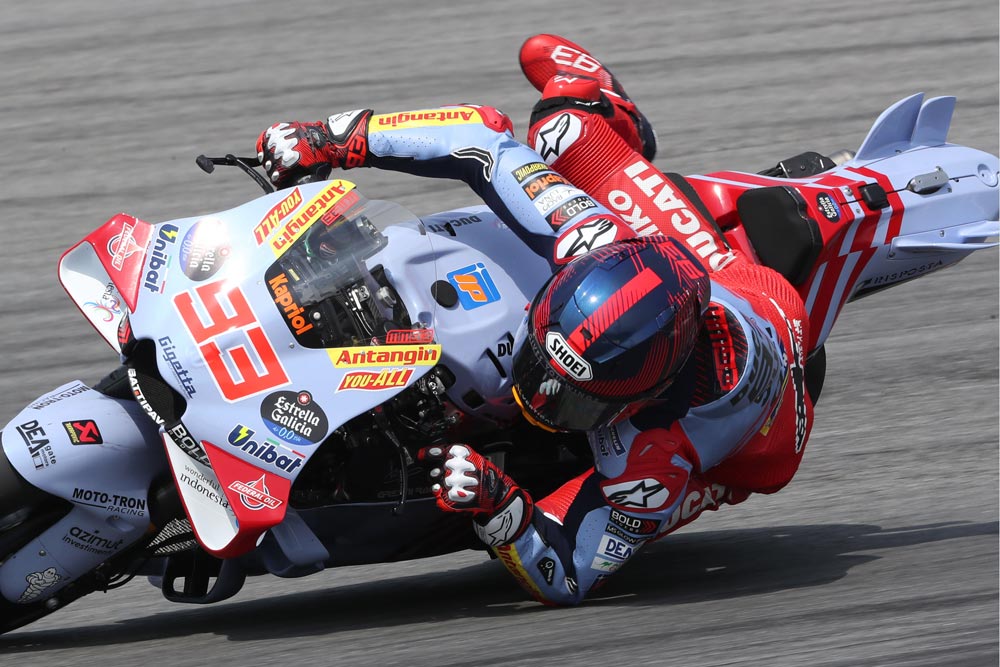 Marc Marquez not only showed he’s fast on the Ducati but also consistent.
Marc Marquez not only showed he’s fast on the Ducati but also consistent.
Marquez Up to Speed
There were a few exasperated looks on day one. But Marc Marquez left Malaysia where he wanted to be after a fruitful test at Sepang. The eight-time World Champion had repeatedly stated the three-day outing would be a real chance to gauge his potential with the year-old Ducati GP23, as it’s a track he counts among his weakest.
And despite being frustrated on day one of the tests by a succession of mechanical issues that delayed his adaptation, Marquez was not just fast over a single lap come the final day (6th, 0.58 of a second off pacesetter Bagnaia). he was consistent. His 10-lap Sprint simulation was just 2.6 seconds slower than the fastest of the test.
Not bad for a rider who was still working on basic ergonomic setup, like where to precisely place the footpegs, handlebar and front brake, throughout the test.
Marquez was essentially undoing his habits and instincts built up riding Honda’s RC213V over 11 years. “It is a completely different riding style,” he said of the adaptation to Ducati’s Desmosedici. “Basically, I was used to riding a lot with the front and massive pickup with the Honda. But the Ducati, you are using more the rear [and] the way to use the rear tire is different.”
The 30-year-old (and turning 31 on February 17, 2024) was only too happy to point out how the deficit to Pecco Bagnaia, Jorge Martin and Enea Bastianini, Ducati’s fastest runners, was significant at the close of the final day. But compatriot Martin wasn’t buying any of it. “He will be really close and maybe ready for the victory in Qatar,” said the Pramac man.
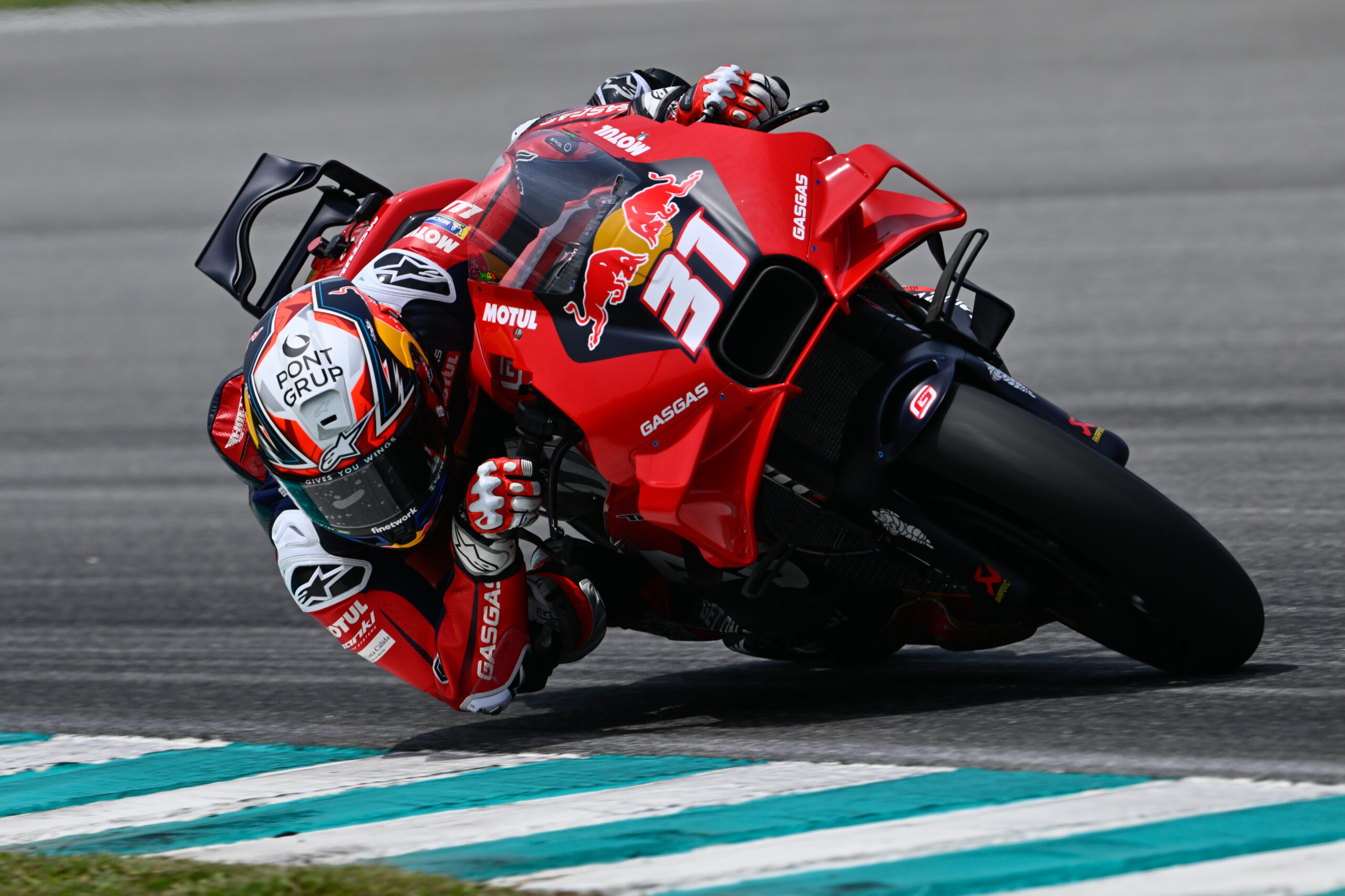 This kid is hot to trot right now. Acosta went second the GasGas RC16.
This kid is hot to trot right now. Acosta went second the GasGas RC16.
Acosta Amazes
On this evidence, it’s time to believe the hype. He may not have topped the first official test of 2024, but Pedro Acosta amazed the watching world in Malaysia, breaking the previous lap record and demonstrating he will surely be a force in his rookie MotoGP season.
Acosta’s performances across the three days—and in his dealings with the media soon afterward—were befitting of a 35-year-old veteran rather than a 19-year-old in just his third visit to the Sepang International Circuit.
It was hard to know what aspect of the test was most impressive of the Spaniard’s test. Was it the fact he ended the official test ninth, 0.058 of a second off Brad Binder, the fastest KTM? Or perhaps it was how he lowered his personal best time of 1 minute, 59.385 seconds on the first day of the three-day Shakedown to 1 minute, 57.365 seconds on the final day of the official test—an improvement of 2.02 seconds.
In some ways, it was how Acosta appeared to take all attention directed toward him and his immediate speed in his stride. Asked if the heightened expectations led to increased pressure, the GasGas Factory Racing Tech 3 man quipped, “Pressure is only a word.”
“I’ve lived the last three years of my life with pressure every day—it’s become quite normal,” he said. “Anyway, we cannot be focused on testing. So [let’s] keep calm.”
Even Marquez was impressed. “It might take more time or less,” said the eight-time World Champion after the test’s completion. “But he’ll be fighting for the championship sooner or later.”
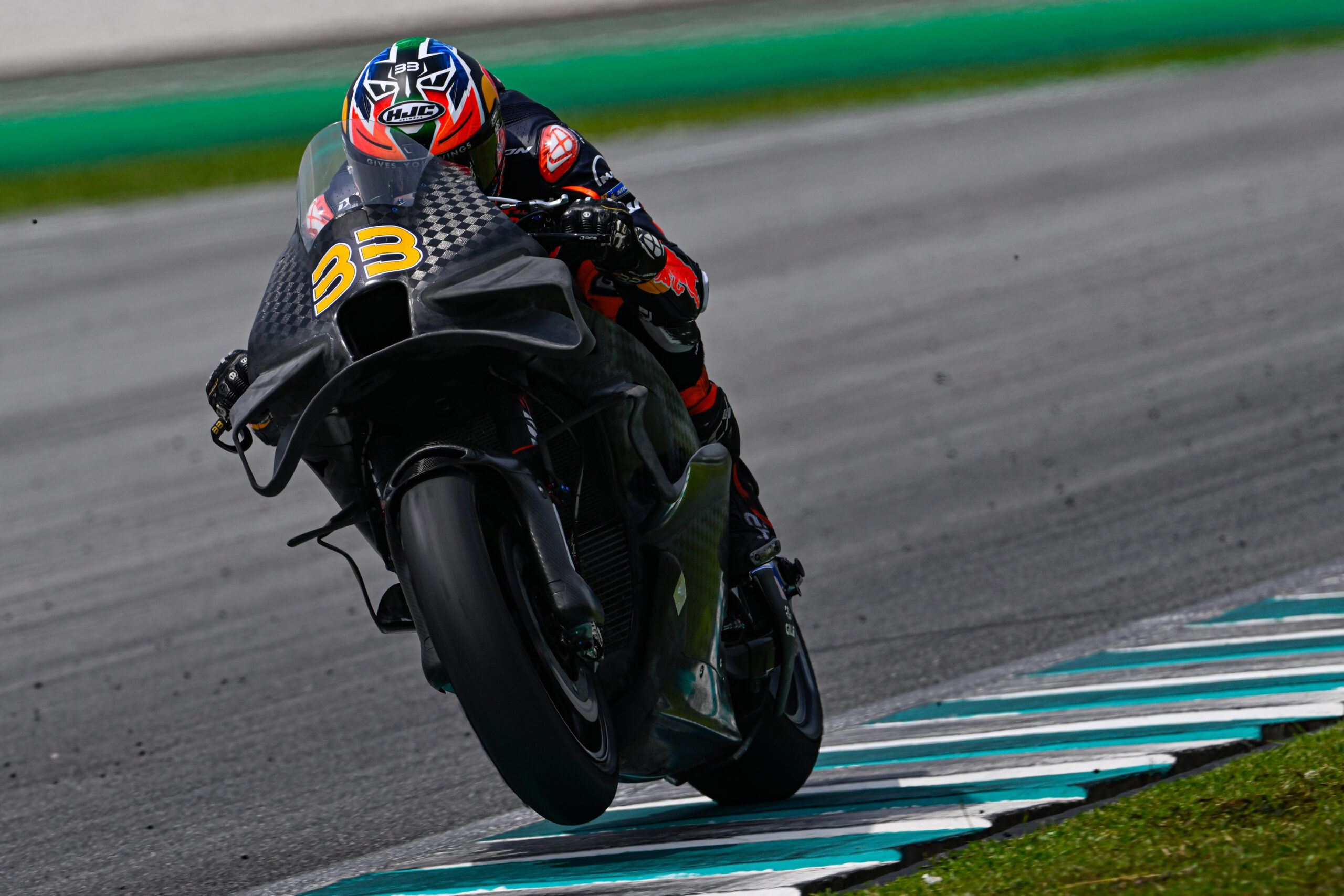 More aero changes were in stall for Binder and the KTM hordes.
More aero changes were in stall for Binder and the KTM hordes.
KTM and Aprilia Improved—But Still Trailing
Acosta’s performance was just one of many pleasing aspects for KTM, who had previously struggled at the first test of the year. The factory brought a number of aerodynamics upgrades, a new engine, with a different note to the four other factories, as well as evolutions of its carbon-fiber chassis updates.
Yet, come the final day, Binder felt his package was close to being race-ready. “So far so good,” said the South African. “Things feel a lot better than they look on the time sheets. Probably one of the best preseason tests I’ve ever had. Last year’s test here, I was 14th, and I did a 1 minute 58.9 seconds [this test was a 1 minute, 57.3 seconds]. So, we made a good step in a year. If we keep this type of progress, we can be good.”
Aprilia was more difficult to read. Trackhouse Racing’s Raul Fernandez ruled himself out of the test by crashing on the opening morning, and Maverick Vinales and Miguel Oliveira never got fully comfortable on the ’24 RS-GP. Technical Director Romano Albesiano explained how the factory had prioritized aerodynamics improvements, bringing around 20 different combinations to choose from, including front and rear wings, as well as side pods, ground effect fairings and wings for the swingarm, which complicated testing. Aleix Espargaro (Aprilia Racing) was adamant that the ’24 bike is an improvement. “It’s more physical but better.”
 Fabio Quartararo was the fastest of the Yamahas in 11th. Quartararo was complaining of similar issues from last year, which hindered the Yamahas throughout the last season. Still, the Yamaha showed signs of improvement.
Fabio Quartararo was the fastest of the Yamahas in 11th. Quartararo was complaining of similar issues from last year, which hindered the Yamahas throughout the last season. Still, the Yamaha showed signs of improvement.
Japanese Factories Picking Themselves Up
The final times did little to indicate whether either Yamaha or Honda had turned their respective ships around over the winter months. Joan Mir (Repsol Honda) was top Honda in 10th, 0.69 of a second off Bagnaia’s best. Fabio Quartararo (Monster Energy Yamaha) was the fastest of the Yamahas in 11th, eight-tenths of a second off. And both were complaining of similar issues that hindered their respective machines throughout last year.
For Mir, teammate Luca Marini (19th), and the rest of the Honda men, it was a lack of rear grip and excessive wheelie on the corner exits, especially with increased tire wear. Meanwhile, Quartararo and new teammate Alex Rins (15th) were complimentary of the M1’s rhythm on used tires and increased top speed, thanks to a new and improved engine, but extracting the most of the bike in time attack mode remains problematic. The M1 also remains twitchy, nervous and aggressive, no matter the number of tweaks made to the bike’s electronics.
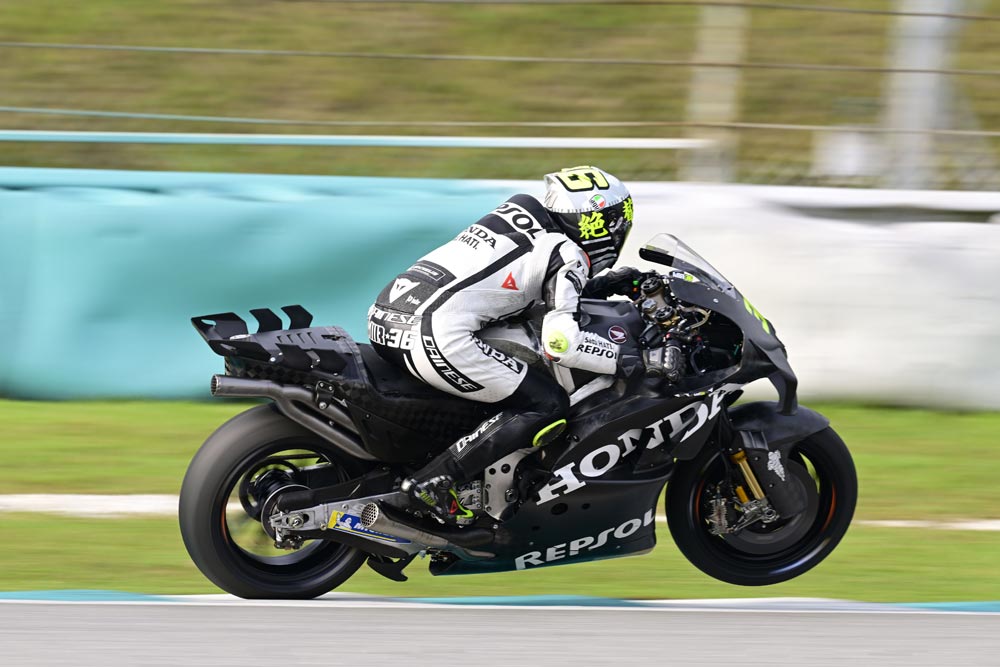 Joan Mir was on the top Honda in 10th. Honda’s Mir and newcomer Luca Marini complained of a lack of rear grip.
Joan Mir was on the top Honda in 10th. Honda’s Mir and newcomer Luca Marini complained of a lack of rear grip.
However, judging progress on where they ended up overlooks some real positives. Bosses of both Japanese factories are aware a change in mindset and working method is needed to regain their previous standing. Yamaha’s aggressive hiring of two leading lights from Ducati—new Technical Director Max Bartolini and senior Aerodynamics Engineer Marco Nicotra—has already resulted in a more aggressive testing program. And Honda was debriefing and pooling information with all four of its riders at the end of each day—a more open approach compared to recent years. In contrast to this time a year ago, both appear to be on the right track.
Racing begins with the Qatar Airways Grand Prix of Qatar at Lusail International Circuit on March 8-10. To view the broadcast times on VideoPass, visit the TV and Live-Stream Racing Listings page on Cycle News.
Click here for all the latest MotoGP news.